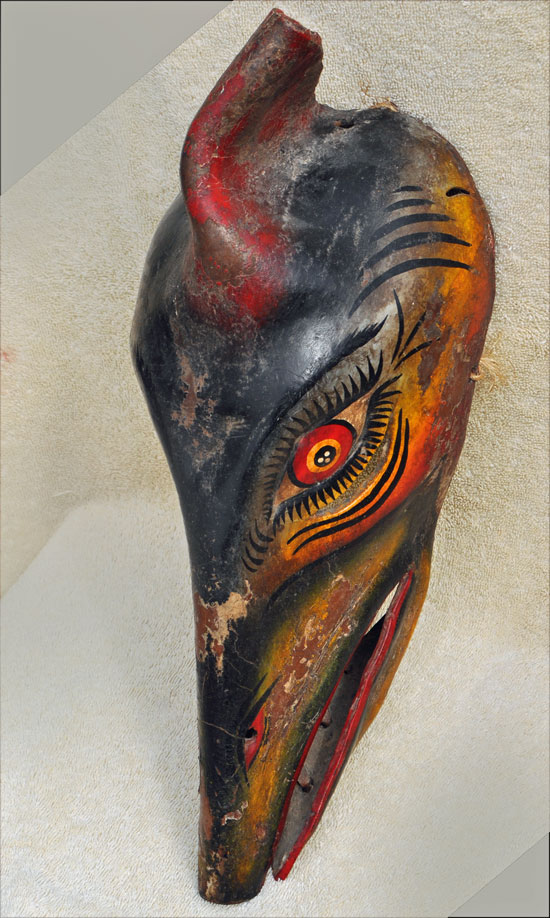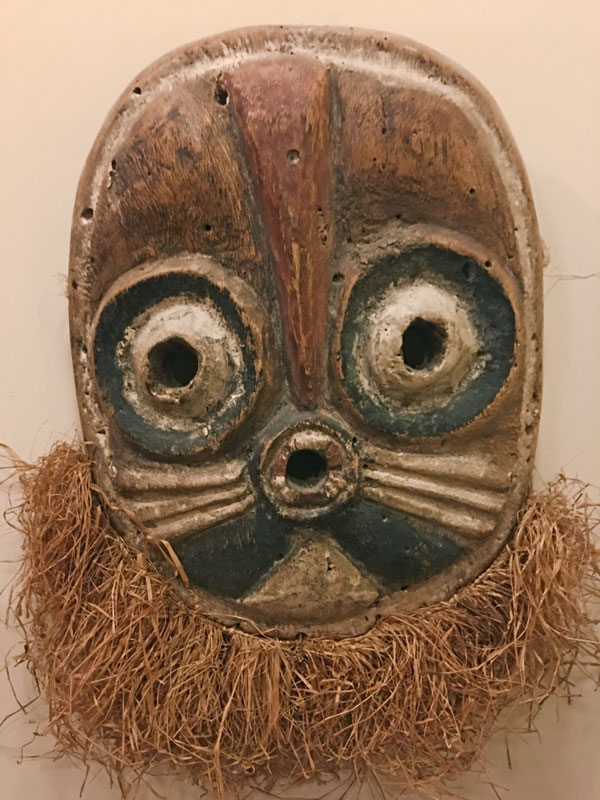 Q: This is a leather mask I think from Indonesia or Bali but it is one from Dads inheritance and I don’t know any more than that. It shows wear like it has been used over the years. I know, I played with it when I was a kid. Rick, 1045 Q: This is a leather mask I think from Indonesia or Bali but it is one from Dads inheritance and I don’t know any more than that. It shows wear like it has been used over the years. I know, I played with it when I was a kid. Rick, 1045
A: I could take a wild guess and say it is Maravilla, the dog character in the Tecuani dance performed by the Nahua people of Guerrero. But leather masks are made in several other states of Mexico as well. When I enlarged your excellent pictures I though I could detect a coating of tinted varnish. That would suggest it is a decorative mask made for the tourist trade. Maybe one of our readers can comment.
The Nahua, or Nahuatl, are the largest group of indigenous people in Mexico and are direct descendants of the Aztecs. |


 Small mask from Congo
Small mask from Congo
3 Comments
Nate
In most of these tigre dances there is a dog (Itzcuintli) who is named Maravilla or Marvel. Dogs are one of the friendliest and most beneficial characters historically depicted by the Indians. In today’s context is primarily seen within the various tigre dances ( Tlacololero, Tecuani, and Tigre)
This particular mask hails from San Miguel Mexico specifically and is from the Danza de los Tlacololeros. In this dance, the tigre appears to menace a set of ‘field workers’ that are tending to crops/the harvest… I believe there are also farm animals present in this scene. This mask clearly has a beak and a beak’s nostril… given that its got a beak, combined with the red at the top.. i think we can safely assume this to be a rooster. These are used, ethnographic pieces. I’ve had my pieces for 6-7 years and haven’t found peers in terms of quality until this one… this one is fantastic too. There are currently several similar on ebay right now, that are in fact lower-quality, and tourist pieces. There are also two others (mine), that are posted, that have a similar attention to colors, details, and the same eyes. This is a lovely find!
Nate
About the only solid reference I’ve ever found online to these… not that museums are never inaccurate though:. I think yours is circa 1960s.
http://www.britishmuseum.org/research/collection_online/collection_object_details.aspx?objectId=640382&partId=1&object=23095&view=list&sortBy=fromDateDesc&page=4
Lucille Martinez
I have one.
Value because I am selling the Mask.